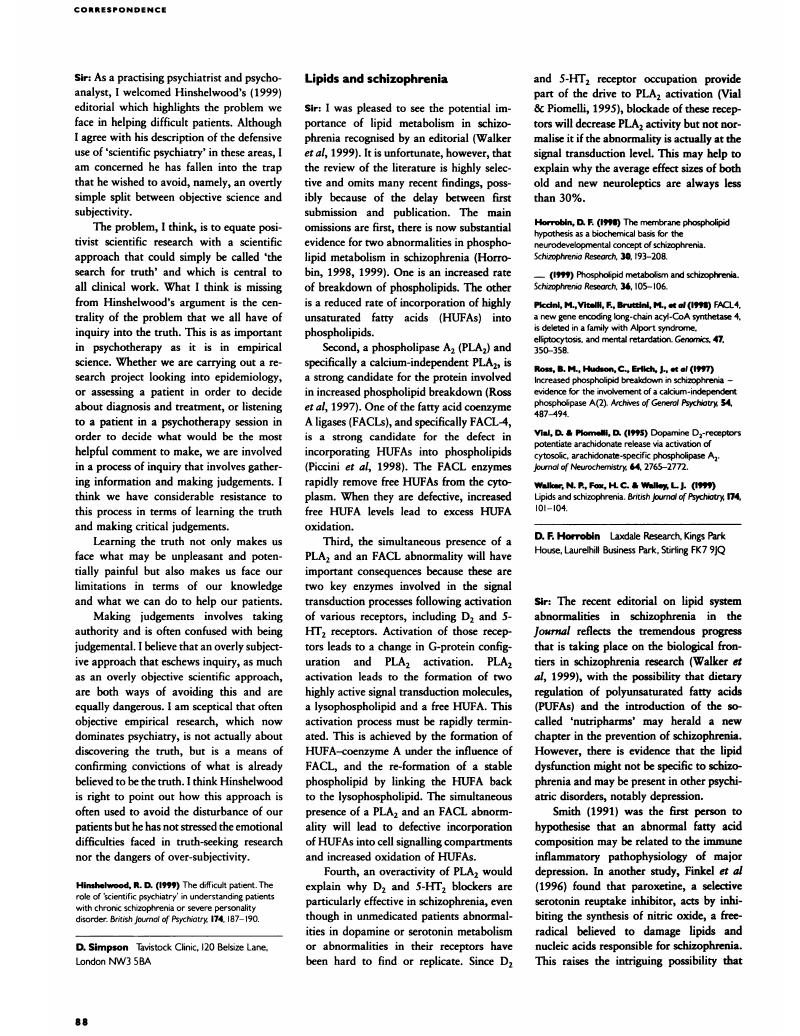No CrossRef data available.
Article contents
[No Title]
Published online by Cambridge University Press: 03 January 2018
Abstract
An abstract is not available for this content so a preview has been provided. As you have access to this content, a full PDF is available via the ‘Save PDF’ action button.

- Type
- Columns
- Information
- Copyright
- Copyright © 1999 The Royal College of Psychiatrists
References
Finkel, M. S., Thode, F. L., Pollock, B. J., et al (1996) Paroxetine: a novel nitric oxide synthetase inhibitor. Psychopharmacology Bulletin, 32, 653–658.Google Scholar
Hamazaki, T., Sawazaki, S., Itomura, M., et al (1996) The effect of docosahexaenoic acid on aggression in young adults. Journal of Clinical Investigation, 97, 1129–1134.Google Scholar
Maes, M., Smith, R., Christophe, A., et al (1996) Fatty acid composition in major depression: Decreased ω3 fractions in cholesteryl esters and increased C 20: 4ω6/C20: 5ω3 ratio in cholesteryl esters and phospholipids. Journal of Affective Disorders, 38, 35–46.Google Scholar
Peet, M., Hurphy, B., Shay, J., et al (1998) Depletion of omega–3 fatty acid levels in red blood cell membrane of depressive patients. Biological Psychiatry, 43, 315–319.Google Scholar
Smith, R. S. (1991) The macrophage theory of depression. Medical Hypothesis, 35, 298–306.Google Scholar
Walker, N. P., Fox, H. C. & Whalley, L. J. (1999) Lipids and schizophrenia. British Journal of Psychiatry, 174, 101–104.Google Scholar





eLetters
No eLetters have been published for this article.